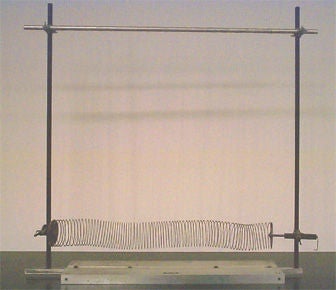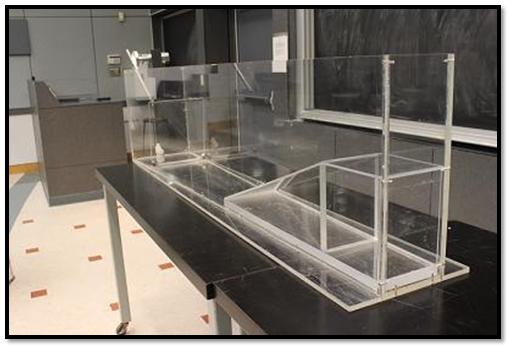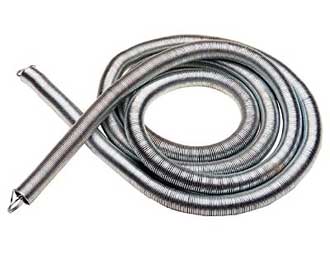W.1(1) – Large Transversal Wave Machine
This model is about 2 m long and 50 cm wide, and provides a good illustration of the characteristics of mechanical waves, such as wavelength, frequency and amplitude. Experiments that can be performed include:
- Origin and propagation of progressive waves
- Wave reflection at free or fixed ends
- Stationary waves
Any disturbance of its rods, creates a transverse wave through the entire structure. The rod’s tips are painted yellow fluorescent to increase the visibility of the wave motion.

W.1(2) – Longitudinal Wave Machine
This apparatus is about 1 m long and it consists of a spiral spring (“slinky”) suspended at every two loops by a thin nylon string. The spring is attached to the frame at ends, one fixed and the other movable, such that small pulses can be sent through the spring. Wave characteristics such as speed, pulse shape, superposition, energy transmission and reflection can be shown.

W.1(3) – Rubber Rope
A long rubber rope is stretched through the length of the lecture table. A motor driven rotor with a bent shaft produces waves on the rope. Standing waves are easily obtained and clearly visible at a distance. The rubber rope can also be clamped just at one side of the lecture table and waves can be produced manually.

W.1(4) – Tuning Fork with Stylus
A tuning fork mounted on a wooden resonator box is brought close to a hanging pith ball, such that one of its prongs just touches it. This will show the tuning fork vibrating when hit by a hammer since the pith ball will then bounce off its vertical position.
W.1(5) – Wave Modeling Spring
This 6-foot long spring stretches to over 30 feet. Perfect for modeling standing and moving transverse waves as well as moving sound waves.

W.1(6a) – Wave Tank
This large Plexiglas tank (6ft x 1ft x 1.5ft) can be used to visualize and investigate the properties of water waves. The waves are set up by a motorized paddle positioned at one end of the tank.

W.1(6b) – Tsunami Tank
This demo consists of a large tapered Plexiglas tank containing water. A motorized paddle generates waves from the large side of the tank. A wedge placed at the tapered end helps students visualize how tsunamis form.
Click here to see a video of this demo.

W.1(7) – Snakey
The extra-long metal spring is ideal for the study of mechanical waves. The Snakey has an unstretched length of 80 centimeters. Pull the convenient end loops more than 7 meters apart to demonstrate transverse, longitudinal and standing waves.
Click here to see a video of this demo.

W.1(8) – Pendulum Wave Machine
Twenty uncoupled simple pendulums of monotonically increasing lengths are moved together to produce traveling waves, standing waves, and random motion. The length of each successive pendulum has been adjusted to execute one additional oscillation in its period, compared to the previous pendulum. Thus, the pendulums fall out of sync quickly after release due to their different periods of oscillation, but they return in sync again after one dance cycle.
